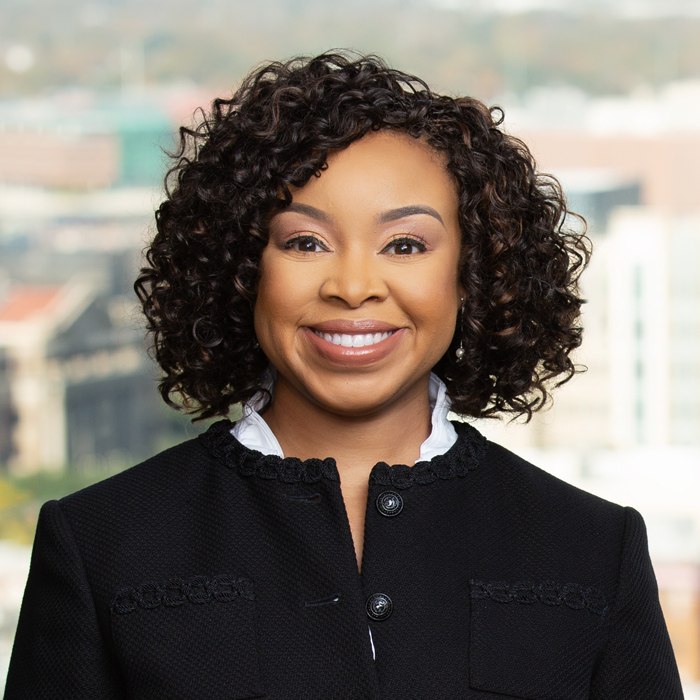What factors drive a successful diversity and inclusion program at a company? In this Jackson Walker Fast Takes episode, Houston partner Dawn Holiday shares how well-intentioned D&I programs miss the mark and provides the essential elements for success.
Featured This Episode
Our Host: |
|
 Courtney White Courtney WhiteResearch Attorney, Dallas & Houston Follow on LinkedIn » Instagram: @courthousecouture |
|
Episode Guest: |
|
 Dawn S. Holiday Dawn S. HolidayPartner, Houston | Labor & Employment Diversity & Inclusion Counseling Practice Follow on LinkedIn » |
|
Episode Transcription
Courtney White: Hi, everyone. I am Courtney White, and this is Jackson Walker Fast Takes. The terms diversity and inclusion have become popular in workplace environments again, and many law firms are actively engaging in efforts to add to or revamp their DEI initiatives. One has to wonder, however, how successful are these efforts? I asked one of my colleagues to join this podcast episode to discuss how well-intentioned D&I programs missed the mark and provide essentials for success. Dawn Holiday, a partner in the Houston office, is a Labor & Employment attorney and member of our firm’s Diversity & Inclusion Counseling practice.
Hi, Dawn. I’m excited about our discussion today, since I’m a member of the Diversity & Inclusion Counseling practice, as well.
Dawn Holiday: Thank you, Courtney, for having me.
Courtney White: You have written an amazing article that was published in the Texas Lawyer on this topic and I would love to review some of the main points with you today. Point one that you made in your article: failure to establish concrete goals.
Dawn Holiday: I’m excited to talk about diversity and inclusion today. The article that I wrote specifically talks about why companies missed the mark on meaningful change in developing D&I goals. So, the first point that you’ve mentioned—failure to establish concrete goals—companies usually have D&I programs in place, but they don’t really think about what goals they’re trying to reach in establishing those programs. There could be several different goals, such as creating a gender-balanced workforce, recruitment, retention, promotion, and also creating a culturally inclusive environment. One of the goals that we’ve seen a lot of organizations have is simply engagement. So, don’t just have a program for the purpose of having a program, but you want to plan and execute D&I programming with the purpose of advancing towards a particular goal.
Courtney White: I think that’s a great point. Point two that you made: insufficient training. I’d love to hear more on this one, because I know you are certified in DEI and I am, as well.
Dawn Holiday: Yes. So, implementing a D&I program is quite an undertaking. What I want to emphasize about insufficient training is that diversity/inclusion is not an HR function. Let me just repeat that—diversity and inclusion is not an HR function.
There are so many facets of creating an effective D&I program, where you need skilled labor and employment attorneys with the qualifications and the background to engage in D&I counseling to assist organizations in creating a robust program. There could be many things that go into developing the program, such as audits, cultural assessments, customized training, to specifically address the needs of an organization.
Courtney White: In your third point, I’d love to hear more about what you call an “adequate measurement of success.”
Dawn Holiday: Many programs are put into place and then there’s no measurement of how successful the program is or not. One of the easy things to do is just to look at the numbers. And what I’ll say about that is quota-based systems don’t work. If we were going to have an effective program, there needs to be a willingness on behalf of the leadership and those who are involved in developing the program to accept feedback from employees on whether the program is meeting its goals.
Courtney White: The last point you made, I think, is also very key. You said that a lot of organizations, they lack a clear timeline.
Dawn Holiday: Yes, there is a lack of a clear timeline to assess and adjust D&I programming. Once a D&I program is put into place, oftentimes there is no period of evaluation – as I said in the last point – to determine whether that program is actually meeting the goals that it was intended to meet. So, there has to be periodic evaluations, and those need to be calendared so that it doesn’t fall through the cracks. Organizations should consider what should we not do anymore, or what should we keep doing or should we change anything about how we implemented the program through this certain time period?
Courtney White: Dawn, thank you so much for providing those essentials for success and for joining me on the podcast today.
Dawn Holiday: Thank you, Courtney, for having me.
For additional JW Fast Takes podcasts and webinars, visit JW.com/Fast. Follow Jackson Walker LLP on LinkedIn, Twitter, Facebook, and Instagram.
The music is by Eve Searls.
The opinions expressed do not necessarily reflect the views of the firm, its clients, or any of its or their respective affiliates. This article is for informational purposes only and does not constitute legal advice.
Meet Dawn
Dawn S. Holiday’s practice is focused on labor and employment law litigation and she regularly counsels clients on minimizing the risks of costly litigation and develops strategies to obtain prompt dispute resolution. She is a champion of diversity, equity and inclusion in the legal profession. Internally, she is a member of Jackson Walker’s Diversity & Inclusion Committee and the firm’s Diversity & Inclusion Counseling practice. Dawn frequently speaks on issues related to hiring, retaining and advancing people of color.
